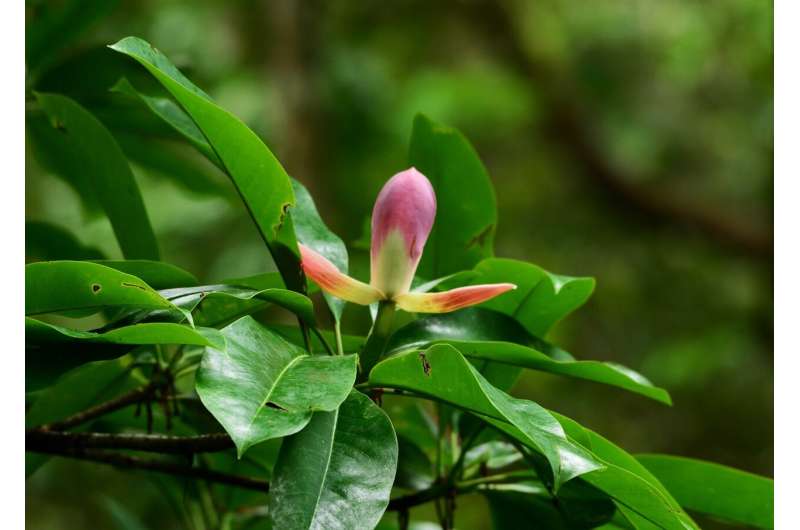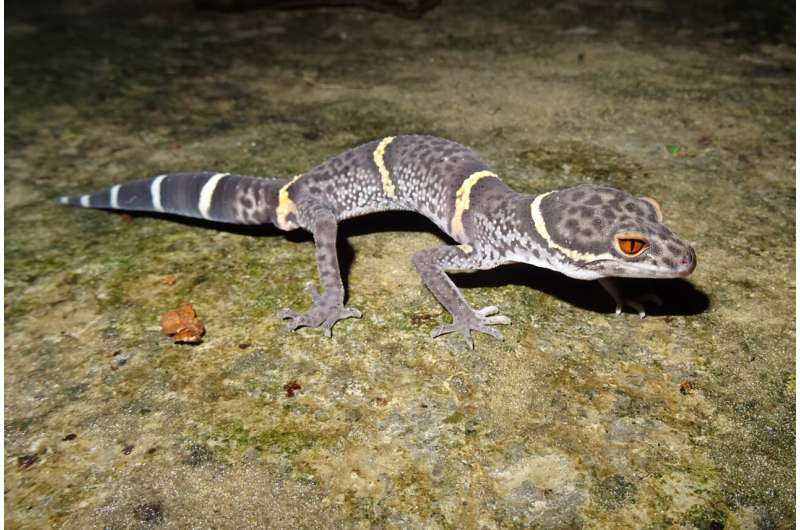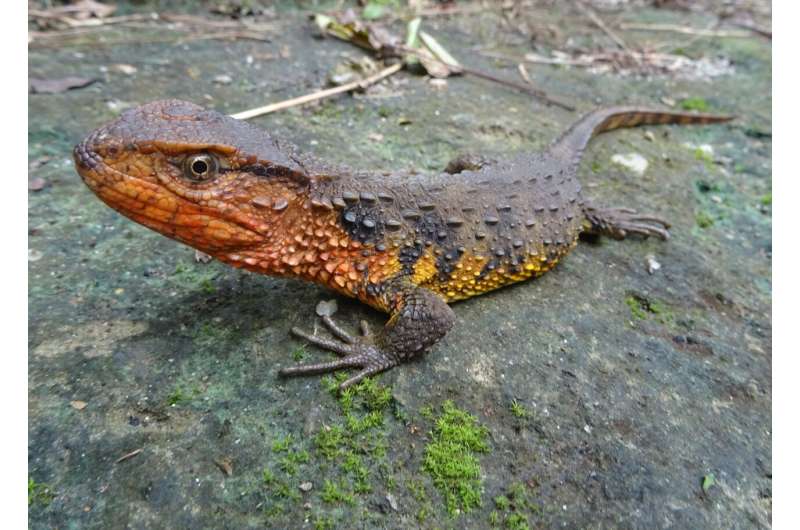Studies of endangered animals on border of China and Vietnam stress need for transboundary conservation

A series of studies on endangered species that make their homes on the border of Vietnam and China underscores the growing importance of transboundary conservation efforts in the face of climate change. As the world warms, many plant and animal species migrate from their traditional habitats, increasing the likelihood of local and global extinctions. A special issue of the journal Frontiers of Biogeography co-edited by the American Museum of Natural History's Director of Biodiversity Informatics Research Mary Blair stresses that strategic, coordinated approaches toward managing transboundary species and landscapes is essential to preventing biodiversity loss.
"Biodiversity is undergoing dramatic loss on the global level, and we know that it is essential to human health and wellbeing—and that one of the most complex and challenging threats to biodiversity is climate change," said Blair, who works in the Museum's Center for Biodiversity and Conservation and co-edited the special issue along with collaborators Minh Le from Vietnam National University and Ming Xu from Henan University in China. "There's an urgent need for more information about how climate change is already affecting the distributions of key endangered species and habitats to inform conservation action planning, especially in areas where there may be limited capacity or resources for management, such as Southeast Asia."
Globally, more than half of all terrestrial birds, mammals, and amphibians have distributions that cross national borders. In addition to threats such as deforestation and hunting, these species may be harmed by the construction of border infrastructure and the lack of coordination of conservation activities on either side of the border. These threats are likely to be exacerbated by climate change. A previously conducted study predicts that most areas climatically suitable as habitat for about one-third of mammal and bird species will have shifted to a different country by the 2070s.
To further investigate this issue, in 2018, with funding from the Prince Albert II of Monaco Foundation, Blair, Le, and Xu began a project focused on a suite of ecologically and culturally important species that live near the China-Vietnam border and are at risk from climate change. These include one of the most endangered animals in the world, the Cao Vit gibbon, which is found in only one small forest patch; one of the world's most threatened trees, Magnolia grandis, with a total population of fewer than 120 adult trees; and the Francois' langur, a monkey that thrives in a special type of forest that grows over limestone.

"Our analyses show that suitable habitat for species like the Cao Vit gibbon and the Owston's civet will significantly shrink and become highly fragmented, whereas habitat for the endangered crocodile lizard will substantially shift under future climate scenarios. The results of the study will play a crucial role in formulating appropriate transboundary conservation measures," said Minh Le. "The special issue is published almost concurrently with the approval of the new Vietnam National Biodiversity Strategy and Action Plan, which highlights the importance of assessing impacts of climate change on biodiversity, especially highly endangered species, in the country and designing transboundary conservation measures in collaboration with neighboring countries."
"The project is also timely and important to China's national biodiversity conservation plan. China is reforming its protected areas by establishing a more efficient conservation network to better protect species and ecosystems in the country, including the 'new immigrants' expected to arrive under future climate change," said Ming Xu. "Results of the project have also been used to support China's National Spatial Planning Initiative, which requires delimitation and implementation along three control lines, namely the ecological protection boundaries, permanently protected farmlands, and urban development boundaries."
The special journal issue includes these detailed studies as well as commentary from the three editors on best practices for using species distribution models (SDMs), which can identify how a species' range might shift under climate change. They authors agree that, especially in transboundary conservation contexts, SDMs should be collaboratively developed from the outset with all of the stakeholders.

"Borders often exemplify complex sociopolitical contexts and histories between countries," Blair said. "So conservation scientists, practitioners, and managers have an obligation to understand those contexts and know how they relate to our work and the goals of conservation. As global changes, including climate change, continue, we will have to increasingly work across borders to achieve biodiversity conservation goals and to do better science."
More information: Mary E. Blair et al, Species distribution modeling to inform transboundary species conservation and management under climate change: promise and pitfalls, Frontiers of Biogeography (2022). DOI: 10.21425/F5FBG54662
Wei C. Tan et al, A present and future assessment of the effectiveness of existing reserves in preserving three critically endangered freshwater turtles in Southeast Asia and South Asia, Frontiers of Biogeography (2021). DOI: 10.21425/F5FBG50928
Hai Ngoc Ngo et al, Modeling the environmental refugia of the endangered Lichtenfelder's Tiger Gecko (Goniurosaurus lichtenfelderi) towards implementation of transboundary conservation, Frontiers of Biogeography (2021). DOI: 10.21425/F5FBG51167
Mary E. Blair et al, Climate change threatens the conservation of one of the world's most endangered transboundary tree species: Magnolia grandis, Frontiers of Biogeography (2021). DOI: 10.21425/F5FBG51059
Mary E. Blair et al, Karst as an abiotic driver of François' langur distribution, with predictions for biological communities on karst under climate change, Frontiers of Biogeography (2021). DOI: 10.21425/F5FBG51838
Tuan Anh Nguyen et al, Rapid decline and fragmentation of the distribution of an enigmatic small carnivore, the Owston's Civet, in response to future climate change, Frontiers of Biogeography (2021). DOI: 10.21425/F5FBG53201
Hoang Trinh-Dinh et al, Assessment of climate change impacts on one of the rarest apes on Earth, the Cao Vit Gibbon Nomascus nasutus, Frontiers of Biogeography (2021). DOI: 10.21425/F5FBG53320
Tham Thi Nguyen et al, Molecular phylogenetic analyses and ecological niche modeling provide new insights into threats to the endangered Crocodile Lizard (Shinisaurus crocodilurus), Frontiers of Biogeography (2022). DOI: 10.21425/F5FBG54779
Provided by American Museum of Natural History





















